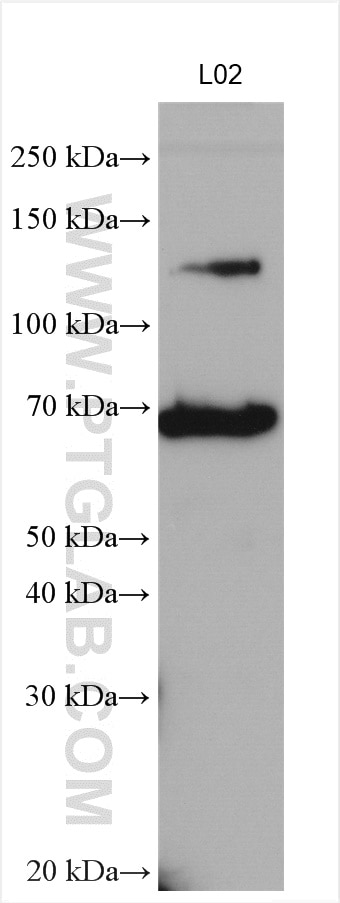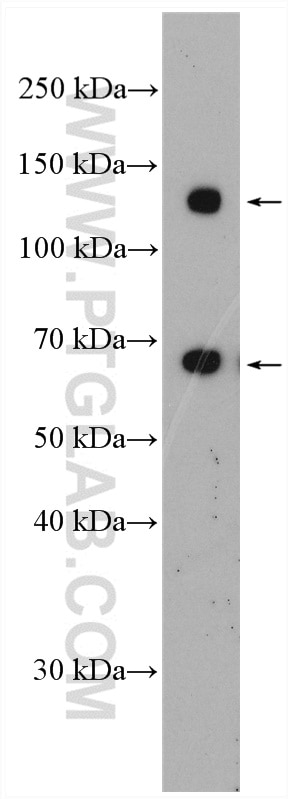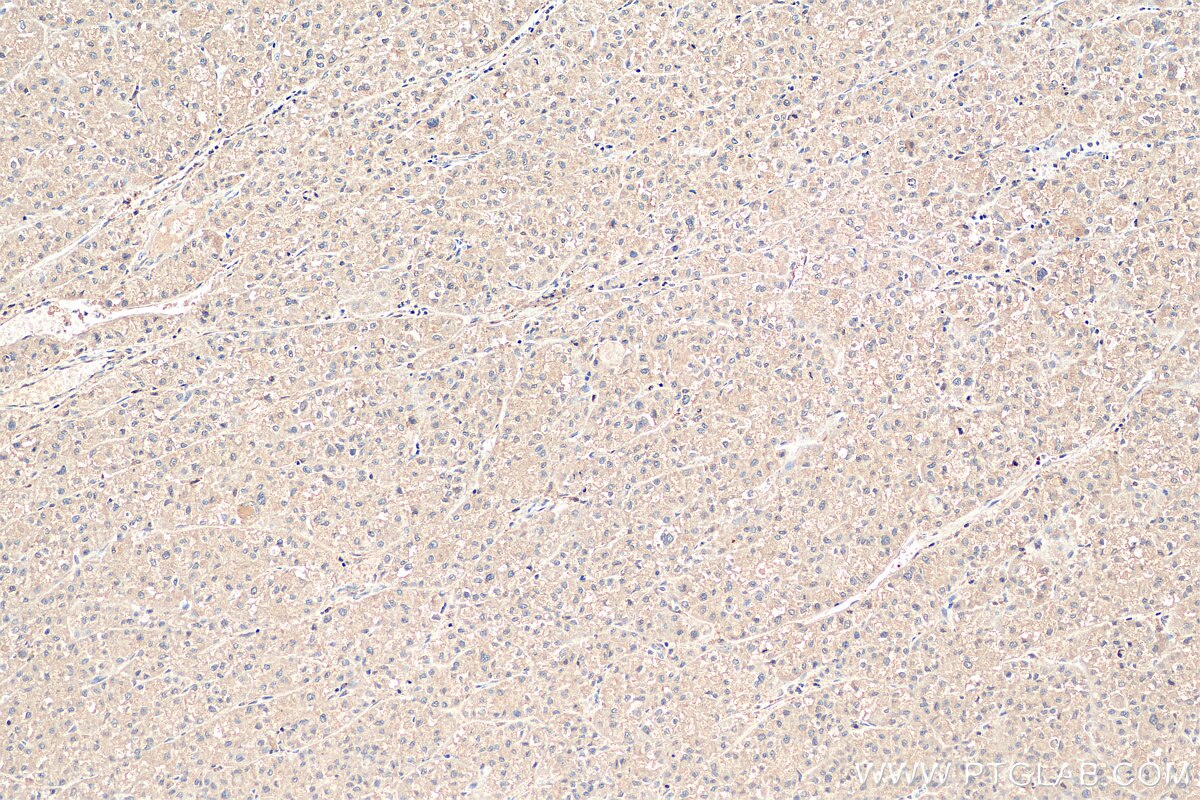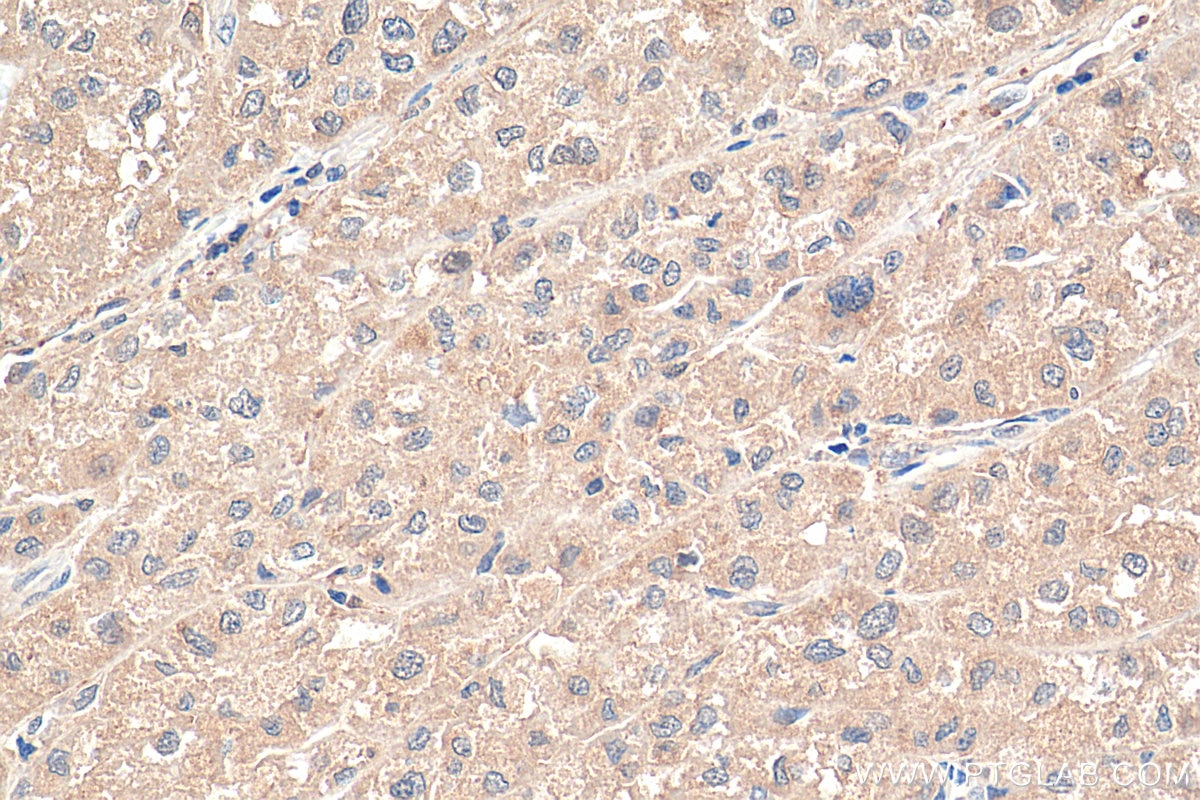PNPLA3 Polyclonal antibody
PNPLA3 Polyclonal Antibody for IHC, WB, ELISA
Host / Isotype
Rabbit / IgG
Reactivity
human, mouse and More (1)
Applications
WB, IHC, ELISA
Conjugate
Unconjugated
Cat no : 11442-1-AP
Synonyms
Validation Data Gallery
Tested Applications
| Positive WB detected in | L02 cells |
| Positive IHC detected in | human liver cancer tissue Note: suggested antigen retrieval with TE buffer pH 9.0; (*) Alternatively, antigen retrieval may be performed with citrate buffer pH 6.0 |
Recommended dilution
| Application | Dilution |
|---|---|
| Western Blot (WB) | WB : 1:500-1:1000 |
| Immunohistochemistry (IHC) | IHC : 1:50-1:500 |
| It is recommended that this reagent should be titrated in each testing system to obtain optimal results. | |
| Sample-dependent, Check data in validation data gallery. | |
Published Applications
| WB | See 3 publications below |
Product Information
11442-1-AP targets PNPLA3 in WB, IHC, ELISA applications and shows reactivity with human, mouse samples.
| Tested Reactivity | human, mouse |
| Cited Reactivity | human, mouse, rat |
| Host / Isotype | Rabbit / IgG |
| Class | Polyclonal |
| Type | Antibody |
| Immunogen | PNPLA3 fusion protein Ag1959 |
| Full Name | patatin-like phospholipase domain containing 3 |
| Calculated Molecular Weight | 481 aa, 53 kDa |
| Observed Molecular Weight | 50-70 kDa, 130-150 kDa |
| GenBank Accession Number | BC014449 |
| Gene Symbol | PNPLA3 |
| Gene ID (NCBI) | 80339 |
| RRID | AB_2918026 |
| Conjugate | Unconjugated |
| Form | Liquid |
| Purification Method | Antigen affinity purification |
| Storage Buffer | PBS with 0.02% sodium azide and 50% glycerol pH 7.3. |
| Storage Conditions | Store at -20°C. Stable for one year after shipment. Aliquoting is unnecessary for -20oC storage. 20ul sizes contain 0.1% BSA. |
Background Information
PNPLA3 belongs to a family of proteins that share a domain that was first identified in patatin, a major soluble protein of potato tubers with nonspecific acyl hydrolase activity. The domain differs from classical lipases by employing a catalytic dyad (Ser-Asp), rather than a catalytic triad, to effect hydrolysis. PNPLA3 is expressed primarily in liver and adipose tissue, in which it partitions to membranes and lipid droplets. Real-time PCR of cDNA from human tissues indicated that PNPLA3 expression was highest in the liver, followed by skin and adipose tissue. PNPLA3 is expressed at the highest levels in adipose tissue of mice. The PNPLA3 protein was expected at 50-70 kDa, as observed; the additional band at approximately 130-150 kDa is a oligomer bands. (PMID: 20385813, PMID: 24931521, PMID: 23023705)
Protocols
| Product Specific Protocols | |
|---|---|
| WB protocol for PNPLA3 antibody 11442-1-AP | Download protocol |
| IHC protocol for PNPLA3 antibody 11442-1-AP | Download protocol |
| Standard Protocols | |
|---|---|
| Click here to view our Standard Protocols |
Publications
| Species | Application | Title |
|---|---|---|
Diabetes Rab8a Deficiency in Skeletal Muscle Causes Hyperlipidemia and Hepatosteatosis Via Impairment of Muscle Lipid Uptake and Storage. | ||
Arch Biochem Biophys Baicalin ameliorates alcohol-induced hepatic steatosis by suppressing SREBP1c elicited PNPLA3 competitive binding to ATGL. | ||





